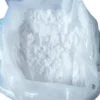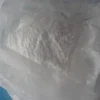Dostinex /Cabergoline Oral Anabolic Steroids powder for Muscle Growth CAS 81409-90-7
Brand Name : Doublewin
Certification : ISO 9000, SGS
Place of Origin : China
Delivery Time : In 2 days time
Packaging Details : Safe packaging
Product Name : Cabergoline /Dostinex
CAS : 81409-90-7
Purity : 99%
Export Market : Global
High Light : legal anabolic steroids, bodybuilding oral steroids
Halotestin(Fluoxymesterone) Quick Details
What is Dostinex?
Cabergoline is a white powder soluble in ethyl alcohol, chloroform, and N, N-dimethylformamide (DMF); slightly soluble in 0.1N hydrochloric acid; very slightly soluble in n-hexane; and insoluble in water.
Dostinex Tablets contain cabergoline, a dopamine receptor agonist. The chemical name for cabergoline is 1-[(6-allylergolin-8β-yl)-carbonyl]-1-[3-(dimethylamino) propyl]-3-ethylurea. Its empirical formula is C26H37N5O2, and its molecular weight is 451.62.
Cabergoline is a white powder soluble in ethyl alcohol, chloroform, and N, N-dimethylformamide (DMF); slightly soluble in 0.1N hydrochloric acid; very slightly soluble in n-hexane; and insoluble in water.
Dostinex Tablets, for oral administration, contain 0.5 mg of cabergoline. Inactive ingredients consist of leucine, USP, and lactose, NF.
Halotestin(Fluoxymesterone) Mechanism of Action
The secretion of prolactin by the anterior pituitary is mainly under hypothalamic inhibitory control, likely exerted through release of dopamine by tuberoinfundibular neurons. Cabergoline is a long-acting dopamine receptor agonist with a high affinity for D2 receptors. Results of in vitro studies demonstrate that cabergoline exerts a direct inhibitory effect on the secretion of prolactin by rat pituitary lactotrophs. Cabergoline decreased serum prolactin levels in reserpinized rats. Receptor-binding studies indicate that cabergoline has low affinity for dopamine D1, α1- and α2-adrenergic, and 5-HT1- and 5-HT2-serotonin receptors.
Clinical Studies
The prolactin-lowering efficacy of Dostinex was demonstrated in hyperprolactinemic women in two randomized, double-blind, comparative studies, one with placebo and the other with bromocriptine. In the placebo-controlled study (placebo n=20; cabergoline n=168), Dostinex produced a dose-related decrease in serum prolactin levels with prolactin normalized after 4 weeks of treatment in 29%, 76%, 74% and 95% of the patients receiving 0.125, 0.5, 0.75, and 1.0 mg twice weekly respectively.
In the 8-week, double-blind period of the comparative trial with bromocriptine (cabergoline n=223; bromocriptine n=236 in the intent-to-treat analysis), prolactin was normalized in 77% of the patients treated with Dostinex at 0.5 mg twice weekly compared with 59% of those treated with bromocriptine at 2.5 mg twice daily. Restoration of menses occurred in 77% of the women treated with Dostinex, compared with 70% of those treated with bromocriptine. Among patients with galactorrhea, this symptom disappeared in 73% of those treated with Dostinex compared with 56% of those treated with bromocriptine.












Reviews
There are no reviews yet.